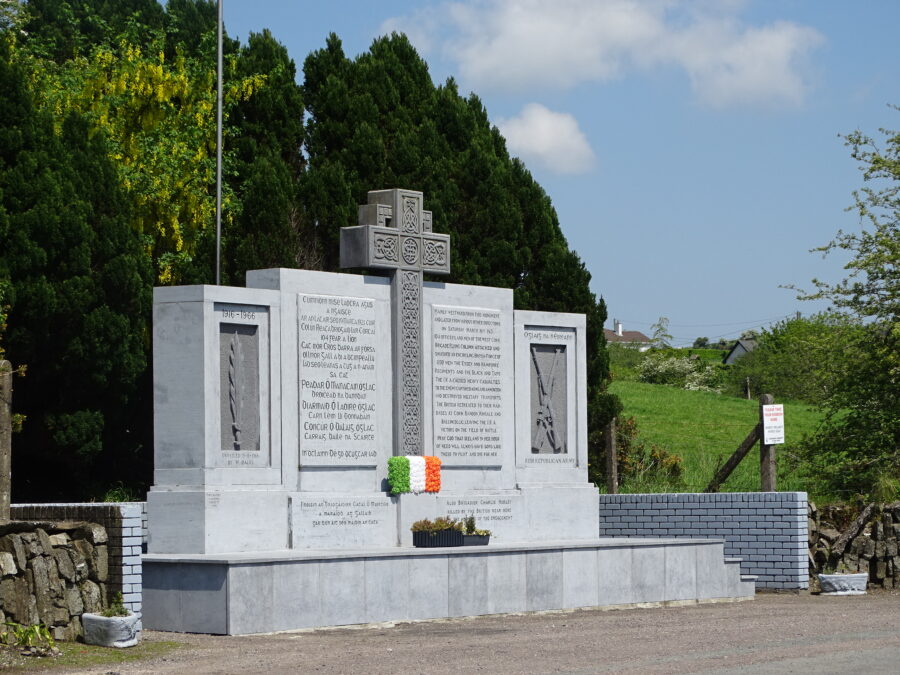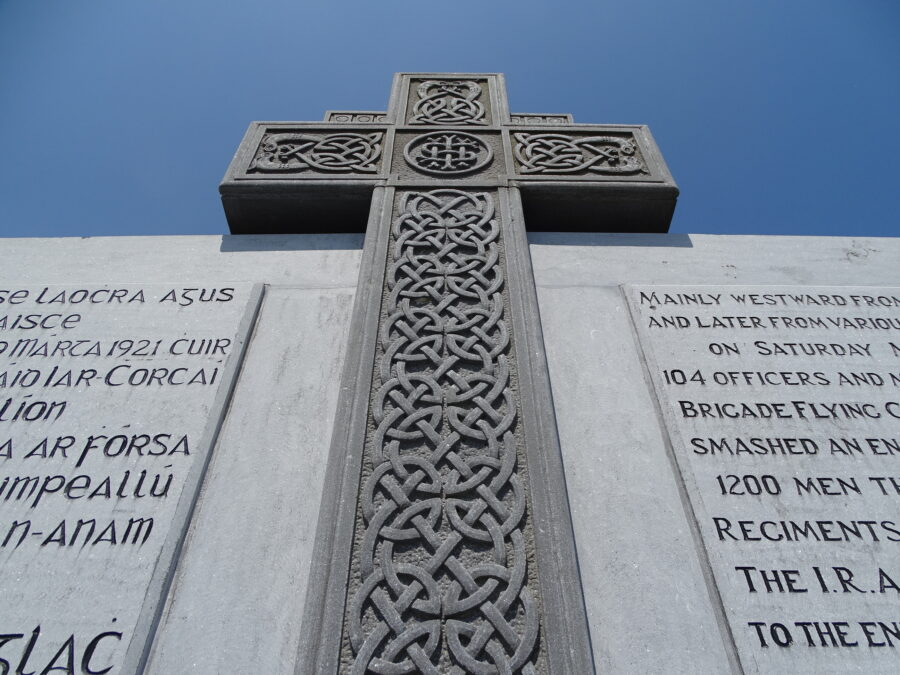
Kieran’s Our City, Our Town Article,
Cork Independent, 28 October 2021
Journeys to a Truce: The Aeridheachts Return
October 1921 coincided with many public events, which drew a focus on the importance of the beginning of the Treaty negotiations in London. Rural events called “aerideachts” or cultural events returned, which focussed on Irish music and on orations on Irish nationalism. Such events were banned just before the physical months of the War of Independence. But as peace reigned in the autumn of the 1921, such events returned and were used once again as a political tool by Sinn Féin to outreach to the Irish public.
On Sunday 2 October 1921, the Cork Examiner reports that thousands of visitors mustered at Crossbarry aeridheacht. The event commenced at 2pm. A special train left Cork for Kinsale Junction at noon, and another special left Clonakilty at the same hour, both calling at intermediate stations. Teas and refreshments were supplied on the grounds. Threatening rainfall though did lessen the crowds from Cork City. However, large numbers travelled to Crossbarry in motor cars, motor lorries, horse traps and horse cars of all descriptions, as well as on bicycles and on foot. Towards the close of the programme, persistent rain began to fall but those present did not leave.
The fixture was held in a field adjoining the road at the point where the Crossbarry Ambush was carried out. Previous to the opening of the programme, many people who had come to Crossbarry occupied themselves in visiting the various places of interest in connection with the engagement – the points occupied by the military in their advancing movements and the line of retreat of the IRA, and houses involved with the ambush.
The very best talent including All-Ireland prize-winners contributed to the success of the aeridheacht programme. This comprised singers of traditional songs, Gaelic dancing, and the Irish music and sport. Members of the Cork Pipers’ Club and also the Bandon and Kinsale Pipers’ Club were participants.
Commandants Tom Barry and Seán Hales TD presided. Addressing the gathering, Tom Barry was enthusiastically received and had been asked by the committee to say a few words to the people present. In his opinion an aeridheacht was not the place for speaking on matters affecting the government of the country, and he would confine himself to matters affecting him personally as a “Soldier of the Irish Republic”. Probably the matter engaging their attention more so than any other at that moment was the Truce. He outlined that the Irish Republican Army had entered into the Truce, not at its own request, but at the request of others but would adhere to the terms, noting – “We have entered into it loyally, and with every intention of scrupulously adhering to its terms. We have expected the enemy to keep the terms as strictly, but as we all know, this was far from the case”.
Continuing Tom Barry referred to a breach of Truce conditions through the actions of the Royal Irish Constabulary in Tipperary Town in September (1921) and said it had been stated that it was not the intention of either side to make a statement in reference to the matter pending an enquiry.
Another matter concerning the Truce was the treatment of Irish prisoners by Irish gaols. Citing the case of Cork Gaol, Tom Barry said the men undergoing sentences of imprisonment with hard labour were placed on the same status as prisoners. He highlighted that 6,000 men were being treated in gaols and camps as criminals. Tom Barry argued: “The Irish Republican Army was recognised by the British Government as an army of soldiers, but their comrades in gaol were treated as criminals”.
Tom Barry noted that he would not go into the question of whether there would or would not be peace as a result of the negotiations. He stated that the Irish Republican Army was there to act under the orders of the Government of the Republic – “they were not looking for war, but they were ready for it. The country wanted liberty, and would insist on getting it…we must not forget that from this particular area, people had laid down their lives in the cause. Some had died almost on the very field in which the people were standing…it was the duty of everyone to be prepared to fight on if necessary…the people around West Cork as a whole, and of that district, in particular, had always backed up the Army as those of no other district in the country had done”.
Seán Hales in his speech reiterated Tom Barry’s core points. In 1920, Seán was section commander of the West Cork Flying Column and took part in the Crossbarry Ambush on 19 March 1921. In retaliation for the arson attack on the Hales home in Knocknacurra House, Ballinadee, Bandon, in March 1921, he led a contingent of Volunteers and burned Castle Bernard, the residence of the earl of Bandon. The occupant, Lord Bandon, was held hostage until General Strickland, the British Officer-in-Command, assured he would not execute Volunteers in Cork prison. The British authorities conceded and there was a conclusion to the policy of executing prisoners of war in the Cork area. Seán was elected to the Bandon county electoral area in June 1920, nominated to Dáil Éireann as a Sinn Féin candidate in the May 1921 elections held in fulfilment of the Government of Ireland Act.
On that Sunday 2 October 1921, two other Aeridheachts – one at Clondrohid and one at Youghal – were held. The Clondrohid event focussed on the importance of the Irish language. Mr Diarmuid Ó Laoghaire from the Munster Training College in Ballingeary delivered what was described a powerful address in Irish with the core focus on the need for Irish citizens to speak Irish more. Meanwhile at Youghal, David Kent and Mary MacSwiney gave addresses, which focussed on the history of the Irish Independence movement and setting out their perspective for a modern Ireland.
Captions:
1123a. Crossbarry Ambush Memorial, present day, sculpted by Terry McCarthy and erected in 1966 (picture: Kieran McCarthy).
1123b. Detail of cross on Crossbarry Ambush Memorial, present day, sculpted by Terry McCarthy and erected in 1966 (picture: Kieran McCarthy).
